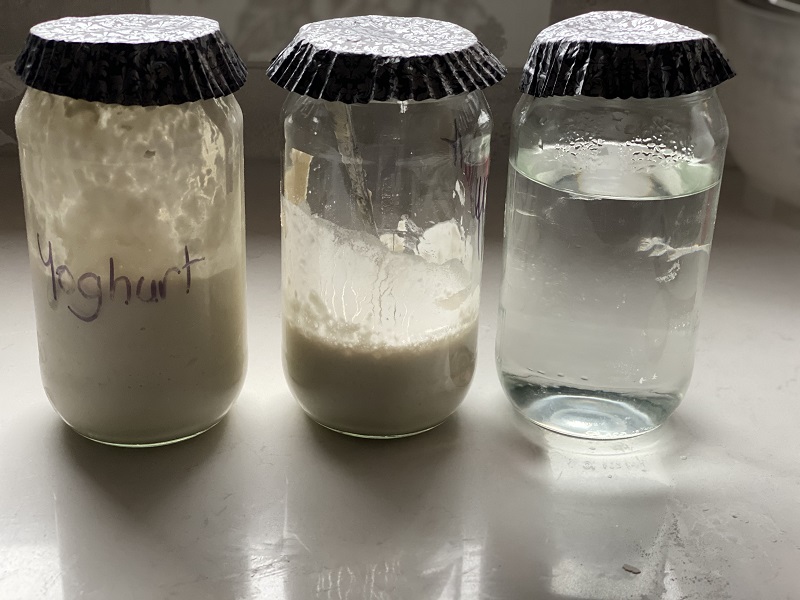Sourdough Pre-ferments and Commercial Yeast What are they?
Sourdough:
Sourdough is a slow-fermented bread that does not contain the addition of commercial yeast in order to rise, because it uses its own natural wild yeast as a leavening agent. Sourdough requires a longer time to achieve the results we desire.
Sourdough will never be ready in one hour, so if you're used to making bread with commercial yeast you can't really draw a comparison.
Most sourdough recipes don't need to be kneaded, but they do require some periods of fermentation. The first is called bulk fermentation and this is where the majority of gluten is developed. So you're swapping time for kneading. If you rush your fermentation periods you will end up with heavy brick-like loaves.
The technique of making sourdough can be traced back for thousands of years.
Here's some more information from wiki if you want to read more.
Sourdough starters can be a batter or a portion of dough. A Sourdough starter can be used in place of any recipe that asks for a Sponge, Poolish or a Biga.
You can turbocharge a sourdough bread recipe by adding bakers yeast to your starter. This would be done by adding say a 1/4 of a tsp of yeast (or even less) to the sourdough portion of the recipe. It will allow the dough to rise faster. Although I'm a bit of a purist and I believe we should no longer call it sourdough. If it hasn't had time to ferment, then it can't be true sourdough bread.
Commercial yeast was initially produced so that we had consistency and quick results for commercial bakers. It was a huge success, and soon thereafter was packaged for use in home kitchens
Pre-ferment:
Terms you may have heard. Sponge, poolish or biga are all forms of preferment made with commercial / bakers yeast.
Sponge:
A sponge is a stiffer pre-ferment. Its usual hydration is around 60% for example 100 g flour/60 g water and around a 1/8th of a tsp of yeast.
Starting with a sponge will give you a lighter, textured bread that has a slightly sweet flavour. Great for a white loaf but it won't have the sour notes you would typically find in sourdough bread because it hasn't been fermented for as long.
Poolish:
This is a type of leavening agent developed by Polish bakers around the end of the 19th century.
A poolish is made by mixing equal amounts of flour and water (100% hydration) and a small percentage of commercial instant yeast then allowing it to develop at room temp for some time. Typically made up and left overnight. The amount of yeast you'll need is approximately 0.05% (which is a bit hard to measure on a scale at home).
A poolish will create a lighter texture to your bread, less sweet than a sponge but brilliant for say Baguettes.
Biga:
This is the Italian version of a pre-ferment. It's the stiffest mix out of the three. It uses around 50% hydration. So that's 100 g flour/50 g water. This type of preferment usually uses more instant yeast than the previous two, so I haven't used this method for years.
Why would you use this method? I would use this method if my flour quality were low, or my wheat was weaker. (*See the next topic Notes on Flour) For example, if I couldn't get Bakers flour but had a recipe that called for a strong flour and had to use plain (all-purpose). This doesn't happen much in modern times, as we generally have access to the required ingredients.
